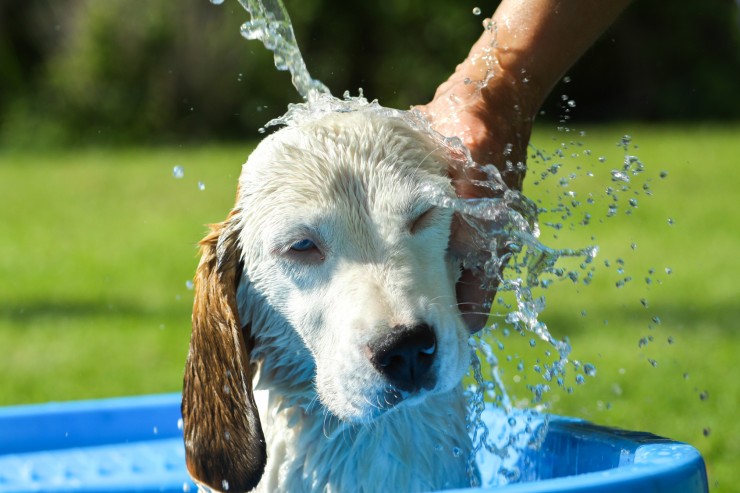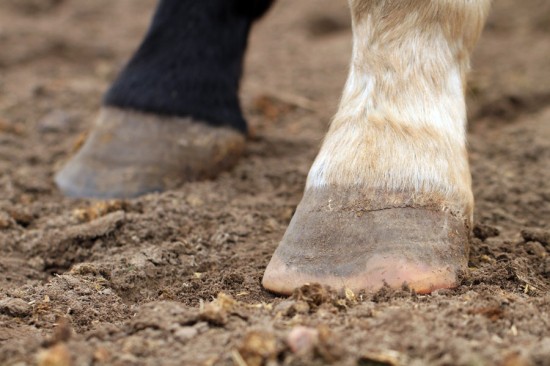Contrary to that old adage, old dogs certainly can learn new tricks. I know from where I speak.
You see, I love dogs. I mean I REALLY love dogs. All kinds. Any kind. In fact my wife says I love them too much. And to be honest, I've proven her right - twice. You see, I'm very partial to rescue dogs. The more needy the better. My first rescue dog became my very best friend. A mixed terrier who was loyal, affectionate and protective. Towards me anyway. I was the ever-doting dog owner. Catering to her every need and even some I think I made up.
But she never got close to my wife and our young daughter because I served her every need. When Rosie passed away prematurely at the age of 10, from an overdose of anesthesia during a routine teeth cleaning, I was devastated. I think my wife and daughter were torn between sadness and relief. All because I never became a responsible dog owner, she had made life difficult, rather than pleasurable.
It wasn't even a month after Rosie's death that I found an abandoned beagle on a rural road by a fire line. Actually she found me. While driving down that road very early one morning, I looked into my rear view mirror only to see two large flapping ears attached to a dog that was desperately trying to catch up to my car. I was able to coax her into my car thanks to a half eaten muffin I had in the car.
Not ready for another dog so soon, I drove her to the SPCA, hoping they would be able to find her owner, or find a new home for her. They didn't. So I ended up adopting her.
We named her Rennie and she joined the family, sort of. Very soon after, the saga continued- in spades. True to form, I showered her with attention and devotion. But this time it got a great deal worse. Rennie soon felt a need to protect me from my own family. It became common for her to growl and even show teeth when my now teenage daughter or wife walked too close to where she was resting. And forget about them approaching me if she was in the room.
Rather than removing the dog from the home, I once again allowed my over-the-top attachment to a "needy" dog completely warp my judgment. As years went by, Rennie became more docile, but mostly due to age. At the ripe old age of at least 17, I had to put Rennie down due to debilitating arthritis. That was more than five years ago.
It took four years for my family to agree to another adoption. But this time would be different, I vowed. So, a year ago, I embarked on a mission to find the holy grail of dog training that would guarantee that our new rescue dog would be a well-adjusted, happy member of our family.
During my research, I learned that while many of the training techniques are very similar for puppies and older dogs, techniques for effectively curbing the more serious negative behaviors - like aggressiveness to people, nipping, persistent barking, hostility towards other dogs, anxiety when left alone, and especially biting - all require special instruction for the older dog to achieve success.
>From two excellent resources I found, I learned there are four methods to discourage negative behavior, including aggression in older dogs:
- Correction Method - replacing a bad behavior with a correct behavior
- The Verbal Reprimand - repeating a simple word - like "no" - in a short, sharp tone that captures the dog's attention after which you redirect your dog to acceptable behavior.
- Ignoring the dog - turning away, showing no reaction, or leaving the room. Since dogs crave attention, the behavior will be altered so the dog gets what he wants.
- Time out - a simple 30-second time out in a crate, small room, or even a tie-down on a short leash. But, any longer than 30-seconds and the punishment becomes ineffective.
Fortunately, the issues with Lucy, our third rescue dog were less severe, but still required correction. Lucy was, what the D.I.Y Dog Training manual identified as a spite chewer. Due to anxiety she experienced whenever she was left alone for extended periods, she would chew anything within reach.
Here's the technique I applied that was recommended in the manual:
1. I placed objects she shouldn't chew on the floor (I used a book, a shoe, a Tupperware container - stuff she chewed before)
2. As Lucy approached the object, I gave a firm (but not screaming) "leave it" command
3. Then I took the object away and replaced it with one of her chew toys
4. Once Lucy started chewing her own toy I lavished her with praise
5. Success came in less than two weeks
We still have a slightly anxious dog when we leave, but at least she's not a destructive anxious dog. Lucy is now a very enjoyable addition to our family thanks to the initiative I took to do the right thing for my family, our new family member, and myself.
Having adopted several rescue dogs, Bob often references a few resources that provide training techniques to correct any negative behavior a dog with an unknown history could exhibit - from timidity and anxiety to aggression. One such resource is the Do-It-Yourself Dog Training Manual.
To obtain immediate access to this comprehensive compendium of dog training techniques, visit Bob's Rescue Dog Blog - DogsRpeople2 at http://butdogsrpeople2.blogspot.com/2009/05/easy-dyi-dog-training-for-well-behaved.html The Gold Membership is currently being offered at a 58% discount for a limited time. So act now before regular pricing goes into effect.

 If Dogs Love Swimming, How Come They Hate Being Bathed?
If Dogs Love Swim
If Dogs Love Swimming, How Come They Hate Being Bathed?
If Dogs Love Swim
 How To Tell If Your Cat Is In Heat
How To Tell If Yo
How To Tell If Your Cat Is In Heat
How To Tell If Yo
 Understanding Laminitis - An Essential Horse Owners Guide
Understanding Lam
Understanding Laminitis - An Essential Horse Owners Guide
Understanding Lam
 Thinking About Getting A New Kitten?
Thinking About Ge
Thinking About Getting A New Kitten?
Thinking About Ge
 Pug Dog Hereditary Health And Health Testing
Pug Dog Hereditar
Pug Dog Hereditary Health And Health Testing
Pug Dog Hereditar